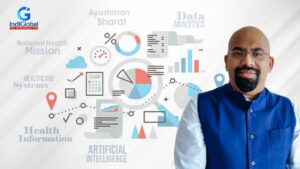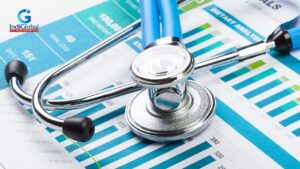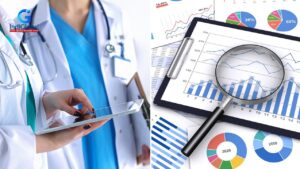 Praveen Rao, Founder of Capturing Life Foundation and a public sector advisor and domain expert in various State and Central Government programs like Smart City Mission, Aarogyashri, Ayushman Bharat, Digital India, Jal Jeevan Mission and other programs shares his insights on the role of Data Analytics in the overall improvement of patient diagnosis and treatment. Collecting data from various organized healthcare systems will help India identify the trends in various non-communicable diseases and also help to combat infectious diseases better. Covid 19 has taught the world to use health information systems for better predictions and emerging trends that have helped to combat infection and control its spread.
Praveen Rao, Founder of Capturing Life Foundation and a public sector advisor and domain expert in various State and Central Government programs like Smart City Mission, Aarogyashri, Ayushman Bharat, Digital India, Jal Jeevan Mission and other programs shares his insights on the role of Data Analytics in the overall improvement of patient diagnosis and treatment. Collecting data from various organized healthcare systems will help India identify the trends in various non-communicable diseases and also help to combat infectious diseases better. Covid 19 has taught the world to use health information systems for better predictions and emerging trends that have helped to combat infection and control its spread.
Praveen Rao in a detailed interview with IndiGlobal Media Network explains the role ahead for India in the digitization of its health systems.
Q1. What is the role of data analytics in healthcare systems? How does it help in disease profiling?
Ans. Data Analytics is the process of interpreting in various datasets to find specimens of trends, draft denouncement and identify the probability for enhancement. Using data analytics helps in the overall improvement of the patient lifecycle with a more accurate diagnosis. This will result in more personalized treatments.
It also helps in gathering a series of health information systems (HIS) and other technological tools utilized by health care professionals, insurance companies and government organizations
There are various sources from which data can be collected i.e
Master patient data
Electronic Health Records
Personal Health Records
Electronic Prescription Services
Master Patient Indexes
Health-Related Smart Phone Apps and more
 Considering the recent pandemic and high population in India, Disease profiling is a critical assessment that should be the priority for healthcare agencies across the globe. Disease profiling or disease surveillance is a method that highlights the sociodemographic, geographic, behavioral, gender-based and clinical characteristics of that specific disease.
Considering the recent pandemic and high population in India, Disease profiling is a critical assessment that should be the priority for healthcare agencies across the globe. Disease profiling or disease surveillance is a method that highlights the sociodemographic, geographic, behavioral, gender-based and clinical characteristics of that specific disease.
The information being collected can be broken down into specific datasets that can then be analyzed for the purpose of any prediction or forecasting. This approach has now been widely adopted in understanding and combating infectious disease profiling and surveillance.
1. How can data be used for Preventing disease, Personalized treatment methods, Improving patient care models, Accuracy in diagnosis and Informed decision-making for both healthcare systems and patients?
Ans. Data is the fuel now and in health, it can create enormous possibilities for providing useful insights. There are various tools like mining, visualization, predictive analytics and artificial intelligence which help to understand the entire ecosystem of the subject. Let’s explore case by case
- Preventing disease: Where human health condition or disease that is persistent or otherwise long-lasting in its effects or a disease that comes with time, such situations can be handled with the predictive analytics. The algorithm understands the early signs and symptoms and encourages preventive measures. It also checks the family history which helps to identify the potential risks which determine the likelihood of the disease development.
- Personalized treatment methods: Tools like machine learning can give actionable information for determining the patient risk and recommending the treatment method. In a study from New York University’s School of Global Public Health and Tandon School, researchers used machine learning and predictive analytics to determine the likelihood of cardiovascular disease and guide treatment options. However, the study researchers noted that including social determinants of health in the predictive model increases the accuracy and can prove better medical assistance for those in diverse communities.
- Improving patient care models: Medical care can substantially affect the number of cases diagnosed within a specific population or geographic location or maybe a gender. The predictive models will help to zero down the issues and can foresee patients who could fall in the diplomatic category. It can enable the evidence-based driven by best uses cases or practices followed in various institutions resulting in better health outcomes.
- Accuracy in diagnosis: Demonstrating early spotting of risk factors is the most constructive method to reduce impermanence as well as improve a patient’s quality of life. Big data collection can contribute to achieving accuracy in recognizing the early stages of any disease. The predictive analytics algorithm remarkably outperforms when identifying patients in need of life-saving interventions.
- Informed decision-making for both healthcare systems and patients: Historical or live data can help to gain insights and make well-informed decisions. Data can be instrumental in improving the quality of care imparted, it also needs a high level of security. A patient’s sensitive data must always be protected from unauthorized eyes. With data analytics, data security protocols and processes must go together. Data analytics in a big way helps their patients to achieve health goals.
 Q3. How can the accurate collection of data and its analysis help control the spread of infectious diseases?
Q3. How can the accurate collection of data and its analysis help control the spread of infectious diseases?
During the pandemic, Covid variants have enabled the researchers to work on the massive data about human behaviors, including human movement, contact tracing, clinical records, virology, pharmacy, scientific literature and so on. Most infectious diseases are communicable in humans by close contact. Therefore, the outbreak and advancement of epidemics are heavily dependent on human mobility.
One of the use cases published in The RS Publishing states that “Data analytics characterized how different travel behaviors contribute to the spread of infectious diseases by using non-negative matrix factorization. The well-calculated algorithm showcased the effective distance between municipalities to examine how each type of mobility contributes to the spread of COVID-19. Such scenarios were well addressed by various analytical algorithms which gave insights into the trends and patterns of various situations arising due to infectious diseases like COVID 19.
Q4. How can accurate data help in profiling, managing, and preventing non-communicable diseases in the population?
Ans. In the last decade, various socio-demographic factors forced us to make a transitional shift toward non-communicable diseases which has significantly increased the number of health losses. Non-communicable diseases (NCDs) are the leading cause of morbidity and mortality globally. As per WHO Non-communicable diseases (NCDs) such as cardiovascular diseases, cancer, diabetes, and chronic respiratory diseases are responsible for 70% percent of all deaths globally.
The analytics platform will use machine learning and deep learning methods to model and predict known and new NCD risk factors – such as tobacco use and alcohol consumption – as well as NCD health outcomes and behaviors. The prediction will be very accurate, and it will enable timely and detailed insights into the complexities of the prevalence of NCDs and their impact on policy action.
With the help of data and various algorithms, assessment can be done to identify various risk factors and localized vulnerability to assist in developing effective prevention and control strategies for different diseases and optimizing the allocation of limited public health resources.
 Q5. How can analytics help in improving the health of the nation and saving the cost per family by early diagnosis?
Q5. How can analytics help in improving the health of the nation and saving the cost per family by early diagnosis?
Ans. According to McKinsey, Big Data analytics can help make sense of complex healthcare data and can enable more than $300 billion in savings per year in U.S. healthcare alone.
Intelligent predictions will eventually help in reducing overall healthcare costs owing to various illnesses. According to an article from the University of Illinois Chicago, chronic disease treatment is one of the industry’s largest costs.
“On a population-wide level, predictive analytics can help greatly cut costs by predicting which patients are at higher risk for disease and arranging early intervention before problems develop. This involves aggregating data that are related to a variety of factors. These include medical history, demographic or socioeconomic profile, and comorbidities,” the article stated.
Therefore, it is well proven that big data can easily predict and enable certain parameters which will help in building a healthy nation.
Q6. Is there a success story of data analytics in India? IF so, what is it? Can this model be used as a role model? Or do we need more models to work on?
Ans. Healthcare analytics refers to the use of vast amounts of collected data to provide organizations with actionable insights. These insights are developed through analytical disciplines to drive fact-based decision-making. In turn, these decisions improve planning, management, measurement, and learning.
There are significant gaps in data availability and data quality across the system as of now. The absence of reliable and timely data aggregated at the patient level reduces the quality of care, and at a systemic level puts significant constraints on policymakers to evaluate the performance of various players or measure outcomes in a consistent manner to make evidence-based decisions. In India Programs like YSR Arogyashri, National Health Authority, and National Health stack by Niti Aayog are some of the authorities which are using a holistic view combining information on multiple health initiatives and feeding into smart policymaking, for instance, through improved predictive analytics.
As the government has rolled out multiple schemes, Data analytics is playing a significant role in detecting and minimizing health care fraud using advanced analytics. the analytics engine is enabled to use advanced analytics with embedded artificial intelligence (AI) and machine learning algorithms to prevent and detect fraud across India for the flagship schemes.

 The turnaround can be attributed to investor friendly policy, akin to the one that the Government of India took in 1991 with the New Economic Policy. The several steps that Telangana took includes: speedy clearance aided by a single window, 100 per cent refund on VAT and GST, refund on stamp duty, exemption from Land Ceiling Act, exemption from electricity wheeling charges and not running around to get approval from the State Pollution Control Board.
The turnaround can be attributed to investor friendly policy, akin to the one that the Government of India took in 1991 with the New Economic Policy. The several steps that Telangana took includes: speedy clearance aided by a single window, 100 per cent refund on VAT and GST, refund on stamp duty, exemption from Land Ceiling Act, exemption from electricity wheeling charges and not running around to get approval from the State Pollution Control Board. The most visible area of the state’s renewable energy push has been in public transport system. The Telangana State Road Transport Corporation (TSRTC) for instance teamed up with TSREDCO to install solar rooftop systems on the bus stations, bus depots and workshops. In all, 97 bus depots and 364 bus stations have been covered and the savings are over Rs 2 crore per annum. What is more! It resulted in reduction in carbon emissions by 7,300 tonnes a year.
The most visible area of the state’s renewable energy push has been in public transport system. The Telangana State Road Transport Corporation (TSRTC) for instance teamed up with TSREDCO to install solar rooftop systems on the bus stations, bus depots and workshops. In all, 97 bus depots and 364 bus stations have been covered and the savings are over Rs 2 crore per annum. What is more! It resulted in reduction in carbon emissions by 7,300 tonnes a year.